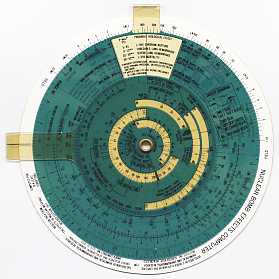
Revised 06 August 2018.


Public domain.
• Home •
As I write these lines, today is the 73rd anniversary of the atomic blast over Hiroshima, on a planet with rampant misery and a failing ecosystem, uncountable billion-dollars have been gambled away by those mad MAD (Mutually Assured Destruction) and deterrence insanities and uncertainties remain, even if great and smaller international crisis have been overcome leaving dormant tens of thousand fantastically more powerful "Little Boy" and "Fat Man". Should we be optimistic since they are everywhere and ready to be abruptly woken up at the push of a button? In their silos; cruising under the oceans inside nuclear submarines; aboard military fleets and in the sky on strategic bombers and, always on the alert! Worst of all, we still have all powerful paranoiac warmongers [4] among us opposing disarmament and constantly seeking increased and more sophisticated armaments. Although the proclivity to use the bomb has been tamed they may still miscalculate or act wildly. This is the real danger.
1
- "... the long-term climatic effects of a major
nuclear war are likely to be much severer and further-reaching than
had been supposed. In the aftermath of such a war vast areas of the
world could be subjected to prolonged darkness, abnormally low temperatures,
violent windstorms, toxic smog and persistent radioactive fallout-in
short, the combination of conditions that has come to be known as
"nuclear winter." The physical effects of nuclear war would
be compounded by the widespread breakdown of transportation systems,
power grids, agricultural production, food processing, medical care,
sanitation, civil services and central government. Even in regions
far from the conflict the survivors would be imperiled by starvation,
hypothermia, radiation sickness, weakening of the human immune system,
epidemics and other dire consequences. Under some circumstance, a
number of biologists and ecologists contend, the extinction of many
species of organisms-including the human species, is a real possibility."
(“The Climatic Effects of Nuclear War.” Richard P. Turco,
Owen B. Toon, Thomas P. Ackerman, James B. Pollack and Carl Sagan.
Scientific American, August 1984.)
2 -
"It has been estimated that if 1% of the over 50,000 nuclear
weapons currently stockpiled by the United States an the Soviet Union
were exploded, there would be a nuclear winter of from 6 months to
3 years that most people on the planet could not survive ... any war
could accidentally initiate a global nuclear war leading to a nuclear
winter ..." Alex C. Michalos-"Militarism and the Quality
of Life" - in "Ethical Issues Associated with Scientific
and Technical Research for the Military - Annals of the New York Academy
of Sciences - Volume 577. December 29, 1989."
3
- "... the United States reportedly has sixty
warheads targeted on Moscow. " - Steven Lee - ibid
4
-"... wars begin in the minds of man ...." Alex
C. Michalos - ibid.